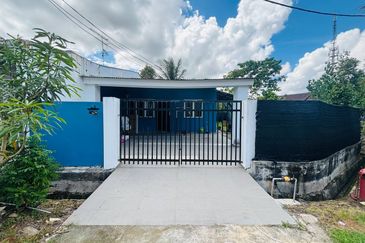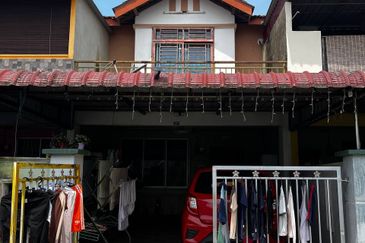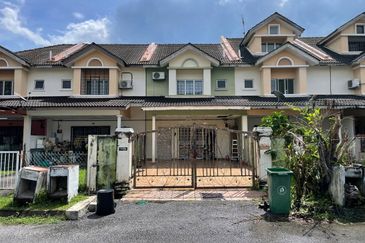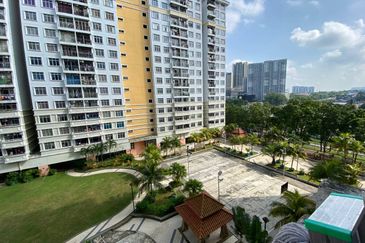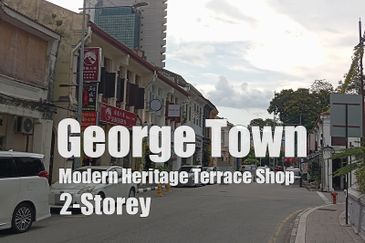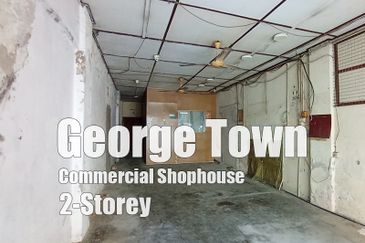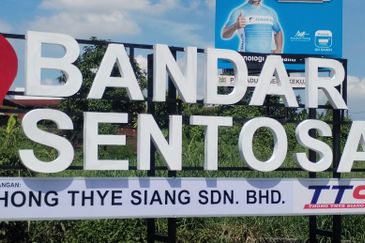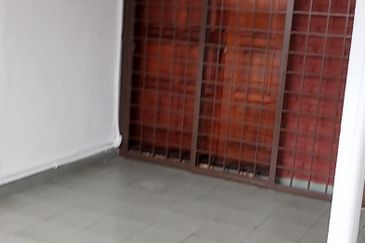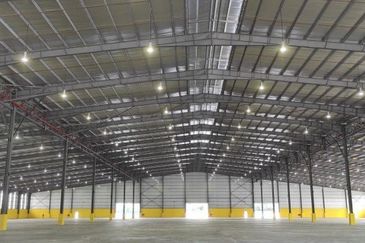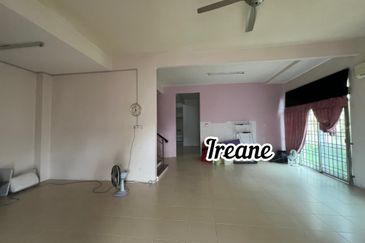PUBLIC performances such as stage drama, opera and music concerts have been performed since ancient times. Today, they continue to be a source of entertainment, even with the advent of electronic gadgets. The buildings featured here, although not exhaustive, continue the tradition of providing live entertainment in structures steeped in history and architecture that is one of a kind. Should you find yourself near one, it is definitely worth a visit.
Harbin Opera House, Harbin, China

Recently completed in 2015, the inspiration for the design of Harbin Opera House came from the spirit of the city’s untamed wilderness and frigid climate. The unique shape of the building appears as if it is sculpted by the wind and water. The interior does not disappoint as well. Consisting of two theatres, the materials used are mainly glass and wood, which present a warm and inviting ambiance. The grand theatre has a seating capacity of 1,600 while the small theatre has 400.
Based in Beijing, architectural firm MAD Architects won the international open competition in 2010 for the Harbin Cultural Island to design a master plan for an opera house, a cultural centre and the surrounding wetland landscape along Harbin’s Songhua River. Spanning 850,000 sq ft, the opera house is the main attraction of the cultural island.
Classical and contemporary music, dance and theatre performances are held in this building. A recent operatic performance in October was Russia’s Mariinsky Theatre’s War and Peace.
Royal Albert Hall, London, the UK


Opened in 1871, the architectural style is the classical Italianate, which was popular in Britain during the 19th century. The circular design is based on the ancient Roman amphitheatres. The hall was the world’s first domed amphitheatre. Inside stands the famous Willis organ, nicknamed the “Voice of Jupiter”, with its 10,000 organ pipes. When the hall was opened, the organ was the largest musical instrument in the world.
Captain Francis Fowke and Major-General Henry Young Darracott Scott were the architects. The hall went through renovations and upgrades from 1996 to 2004. All types of performances from classical operas, ballets to contemporary music concerts and dramas are held there. It has a seating capacity of 5,200.
Some performances here include singer Janet Jackson’s Number Ones, Up Close and Personal concert, the 25th anniversary performance of Andrew Lloyd Webber’s The Phantom of the Opera and concerts of Elton John, Phil Collins and others.
Philharmonie de Paris, Paris, France

The 93,000 sq m (1,001,043.7 sq ft) Philharmonie de Paris is a fairly new opera house in Paris, opened in 2015. Architect Jean Nouvel won an international competition in 2007 to design the building. One of his unique designs is a walkable rooftop where visitors are welcome to take a stroll at any time. The covering of the building is composed of 340,000 tiles that resemble abstracted birds. It comes in seven different shapes and four colours ranging from light grey to black. The façade is covered with more than 200,000 birds in an aluminium sheet, symbolising a grand take-off. The main concert hall is adjustable based on the concept of envelopment. The seating capacity is 2,400. But when the seats in the parterre, a part of the ground floor in the rear and side of the auditorium, are removed, the capacity is increased to 3,650.
Classical and contemporary music, dance and theatre performances are held in this building.
Walt Disney Concert Hall, Los Angeles, the US


This Frank Gehry-designed building offers exterior curves, which resemble silver sails and are made of stainless steel. Originally, Gehry intended it to be clad in stone. But his titanium building in Bilbao, a city in northern Spain, received so much publicity that he was urged to change his initial idea of stone to titanium.
The new material allowed Gehry to tweak the design and create the iconic silver sails we see today. The 293,000 sq ft building sits on 3.6 acres of land. There were many problems during construction, causing the project to be shut down in 1994. But it resumed construction in 1996 through media coverage and support from professionals and the public. It was eventually opened in 2003 with a seating capacity of 2,265. The concert hall serves as the headquarters for the Los Angeles Philharmonic and performances in classical music, contemporary music, world music and jazz are held there. The hall also saw Ellen DeGeneres co-hosting American Idol during the special week of Idol Gives Back. Rascal Flatts, Kelly Clarkson, and Il Divo have performed here.
Cost of construction was about US$274 million.
Oslo Opera House, Oslo, Norway


Norwegian architectural firm Snøhetta won the design for the Oslo Opera House in an international competition in 2000. The exterior of the building is snow white and as it is surrounded by water, it looks like an iceberg rising from the water. The main building’s materials are marble, aluminium, oak wood and glass.
Opened in 2008, the entire project cost €500 million. There are three spaces for opera, ballet and concert performances. The sitting capacity for the Main House, which is the main auditorium, is 1,358. The roof is accessible to everyone. Locals and visitors are welcome to take a stroll on the roof and the large open foyer all year round.
The opera house is home to the Norwegian National Opera and Ballet.
Odeion of Herodes Attius, Athens, Greece

The ancient structure was built in 174 AD. During the second century, Tiberius Claudius Herod Atticus, who came from an important Athenian family, sponsored the construction cost. It is said that the monument was to commemorate the death of his wife Regilla, who died in 160 AD. Ancient testimonies confirm that the monument was an expensive construction due to the cedar wood used for the roof. The entire building was made out of stones, rocks and marble and it could seat 5,000 spectators. In 267 BC, it was destroyed during the incursion of the Heruli, an East Germanic tribe, whose precise origins are unknown. The monument was restored from 1952 to 1953, using marble from the Dionysos area in north-eastern Attica, Greece. It has been the main venue for the Athens Festival, an art festival with concerts and ancient art performances, since 1957. Notable stars who have performed in the arena include Plácido Domingo, José Carreras and Diana Ross.
Vienna State Opera House, Vienna, Austria


The Vienna State Opera House or Weiner Staatsoper was opened in 1869. Neither of the initial architects, August Sicard von Sicardsburg and Eduard van der Nüll, both Austrians, survived to see the opening of the opera house. Sicardsburg died of a stroke while van der Nüll committed suicide.
The architectural style is Renaissance Revival. Buildings of this style are usually rectangular and feature symmetrical façades, with masonry or stone exterior walls. It has a seating capacity of 1,709.
The opera house gained popularity until 1938, when members of the theatre faced persecution at the height of national socialism. Many operatic works could not be performed during this period. During World War II, the building was almost completely destroyed. Only the main facade, the grand staircase, the emperor’s tea room and the “Schwin-Foyer” were left standing. After the war, in 1945, the opera house was rebuilt under the guidance of Austrian architects Erich Boltenstern and Otto Prossinger. It was reopened in 1955 and is still in operation today. The performances held here are mainly ballets and operas. Some notable performers include opera singers such as Placido Domingo and Diana Damrau.
Palau de les Arts Reina Sofia, Valencia, Spain


The 37,100 sq m (399,341.08 sq ft) building with its unique “plume” or roof was designed by Valencian architect Santiago Calatrava. The plume over the almond-shaped building has only one point of support, leaving the other end of the feather floating in mid-air, defying gravity.
It was opened in 2005 and the first opera season started in October 2006. Four venues are prepared for opera, music, ballet and theatre. The main hall, Sala Principal, has a 166 sq m (1,786.81 sq ft) orchestra pit and it is one of the largest in the world. The seating capacity is 1,412.
The other halls include L’Auditori (Auditorium), Aula Magistral (Maestros’ Hall) and Teatre Martin I Soler (Martin I Soler Theatre) with seating capacities of 1,490, 378 and 400 respectively.
Performances such as theatre, dance, opera and music concerts are held there. Its first opera staging was of Beethoven’s Fidelio on Oct 25, 2006. Tenor and conductor Plácido Domingo has also performed in the venue.
National Theatre and Concert Hall, Taipei, Taiwan


The buildings feature traditional Chinese palace designs, with gold roofs, overturned edges, Chinese red colonnades and colourful arches. The roof of the National Theatre has a solemn hip-roof shape while the National Concert Hall has a gable-roof shape.
The 29.65-acre land where the National Theatre and Concert Hall sit on, was once a military ground from the Qing dynasty. Before the current buildings were built, the memorial centre for the late president Chiang Kai-shek who died in 1975 stood there.
In 1987, the National Theatre and Concert Hall were built next to the memorial centre. The buildings were designed by Ho-Mou Architect Firm and the construction cost was NT$7.4 billion. The seating capacity for the National Theatre and Concert Hall is 1,766 and 2,425 respectively. Major drama productions, ballets, operas and other similar productions are held in the National Theatre while symphony orchestra performances and other musical recitals are held in the Concert Hall.
Performances by The Kirov Ballet, Cloud Gate Dance Theatre, Lin Hwai-min, Martha Graham and others have been held in the National Theatre. As for the Concert Hall, Placido Domingo, Luciano Pavarotti, Nobuyuki Tsujii and Fou Ts’ong have performed in its acoustic hall.
Dewan Filharmonik Petronas, Kuala Lumpur, Malaysia

Dewan Filharmonik Petronas is Malaysia’s first concert hall dedicated to classical music and serves as the headquarters of the Malaysian Philharmonic Orchestra. It is located at the Petronas Twin Towers and was officially opened in 1998. Designed by Cesar Pelli, the hall mirrors the traditional shoebox shape of 19th-century European concert halls. A Klais Pipe Organ provides the stage’s backdrop. The seating capacity is 920. The hall mainly holds classical symphony orchestra concerts.
World-renowned orchestras such as the New York Philharmonic and Vienna Symphony; international stars such as Harry Connick Jr, Diana Krall and Larry Carlton, as well as Malaysian artistes SM Salim, Sheila Majid, Siti Nurhaliza and others have performed here.
Sydney Opera House, Sydney, Australia

One of the most iconic buildings in the world, the Sydney Opera House has captured everyone’s attention with its unique design. An international design competition for the opera house was held in 1956 and architect JØrn Utzon from Denmark was named the winner the following year. The main building materials are concrete, granite, glass and ceramic. The white shell-shaped roofs are made from concrete reinforced steel and covered by over one million ceramic tiles. They sit on top of a heavy podium. It is believed that it is the biggest column-free chamber in the world.
Construction started in 1959 and took 14 years to complete, surpassing the expected four years. Cost of construction was originally put at A$7 million but the final cost was A$102 million. It was eventually opened in 1973.
There are seven performance venues in the building, the largest being the Concert Hall with a seating capacity of 2,679. It is said that the Concert Hall Grand Organ, which took 10 years to complete, is the largest mechanical organ in the world with 10,154 pipes. Classical and contemporary performances such as classical orchestra concerts, dramas, contemporary music concerts are held in this building.
Some notable performances staged were Sergei Prokofiev’s War and Peace which was the first opera performed in the building in September 1973; Australia’s opera darling Dame Joan Sutherland gave her final performance in a gala production of Les Huguenots; and an all-Australian concert — a royal variety performance in 1980 attended by Queen Elizabeth II and Prince Philip — featuring Julie Anthony, Roger Woodward, Paul Hogan, Olivia Newton-John and Peter Allen. In 2007, the opera house was inscribed on Unesco’s World Heritage List.
This article first appeared in City & Country, a pullout of The Edge Malaysia Weekly, on Dec 19, 2016. Subscribe here for your personal copy.


